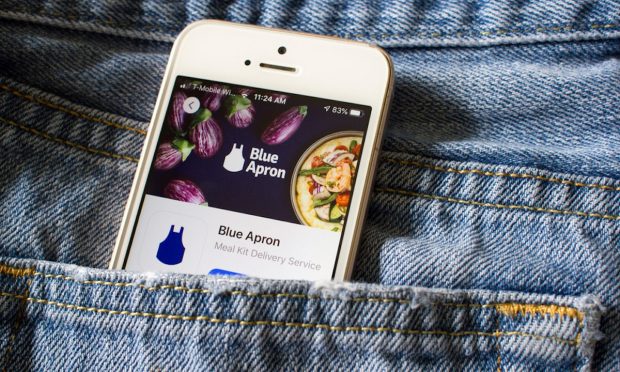Blue Apron’s New Frozen Meals Add Value for High-Churn Subscription Service

Blue Apron announced on Monday (Sept. 13) that it is launching “Heat & Eat” meals as add-ons for subscribers. Unlike the company’s meal kit offerings, these items are single-serving, ready-made frozen meals meant to be microwaved in five minutes or less.
The Context
While the meal kit subscription remains at the center of Blue Apron’s model, the company has been expanding into other areas throughout 2021. In the spring, the company announced its Add-ons feature, which allows subscribers to add appetizers and side dishes to their meals, as well as its “Butcher Bundles,” meat and seafood options that come with curated spices and cooking guides.
Neither the Heat & Eat meals nor these other additions are available as standalone products for non-subscribers, suggesting that even as the company diversifies, these options are meant to add value to the subscription service, not to supplement or replace it.
“We are focused on engaging and retaining our current customers by adding variety into our menu offerings and making sure we provide them [with] the most value that we can,” Linda Findley Kozlowski, Blue Apron’s president and CEO, told PYMNTS in an interview this past spring, noting that the company’s “culinary authority” differentiates its offerings from others on the market.
See also: Blue Apron CEO Says Customers Will Keep Cooking After COVID
What the Experts Are Saying
In recent months, the frozen meal space has been getting an overdue update for consumers who are looking for higher-quality prepared offerings. Take, for instance, the 10,000-store rollout of the Martha Stewart Kitchen line of frozen foods made from the media mogul’s library of recipes.
“We had a retailer tell us that the [frozen food] category hadn’t changed since 1994,” Ken Venturi, CEO of MSK Foods, told PYMNTS. “So we did a significant gap analysis of where we thought the retailer and the consumer were ready to move into some new, higher-quality, higher experiential type of products, and the frozen category was definitely front and center.”
These updates to the category come as consumers, changed by the pandemic, have grown used to getting the bulk of their food needs met at home, even when they do not have time to cook.
“We should anticipate that some people may not feel comfortable eating in any sort of restaurant setting for some time,” Freshly CEO and Co-founder Mike Wystrach told PYMNTS. Instead, he said, consumers will “continue to … gravitate toward convenient, specialty foods to add more excitement to mealtime.”
Related news: Martha Stewart Aims to Take on Every Aisle of the Grocery Store
Other news: Food eCommerce 2.0: Freshly Anticipates Ultra-Personalized Future
What the Data Are Saying
Blue Apron’s value-adds are especially important, given the notorious trickiness of the meal kit subscription category. A pre-pandemic survey found that although 19% of U.S. adults had tried a meal kit service, most churned out. Only 38% of those who had tried the services remained subscribed.
PYMNTS’ new report, Subscription Commerce Conversion Index, created in collaboration with sticky.io, finds that the most common reason that consumers reduce their number of subscriptions is to reduce expenses, while three in 10 consumers reported that one or more subscriptions have not been shown to be useful enough to maintain them.
More details: Subscription Commerce Conversion Index
Read more: Deep Dive: The Meal Kit Market
